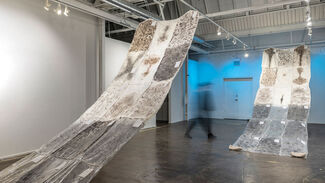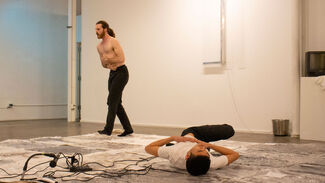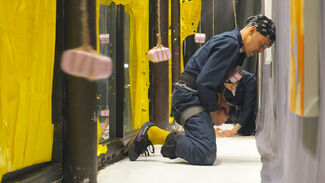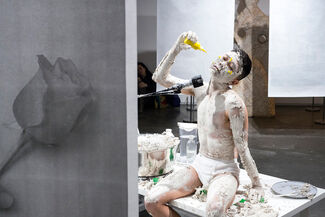

Sungjae Lee
Lecturer
Contact
Bio
SUNGJAE (SJ) LEE (he/they) is a Seoul-born, Chicago-based visual artist, educator, and writer whose practice centers around the visibility and varied representations of queer Asians. He has presented his works globally in South Korea, Sweden, Canada, New Zealand, and the US. He has had residencies at ACRE, High Concept Labs, HATCH Projects, Fire Island, Vermont Studio Center, Millay Arts, and Yaddo. He was selected for the 2024 Chicago Artadia Awards Finalist, 2022-2023 Kala Art Institute Fellowship, Franklin Furnace Fund 2021-22, and the 2020 AHL Foundation Artist Fellowship. He received his BFA in Sculpture from Seoul National University and MFA in Performance Art from the School of the Art Institute of Chicago (SAIC).
Personal Statement
My practice brings attention to queer Asian men who have been desexualized, rendered effeminate, and thus made invisible to a Western gaze. I feel conflicted toward images of masculinity in the mass media, particularly the standardized masculinity focused on hairy, muscular white males. My lack of muscular build and my sparse body hair have caused me to fantasize about Caucasian men, the representation of power and privilege, and to become desirable and visible just like them. At the same time, I am cautious of my whitewashed desire because it risks widening the hierarchical gap for Asian men. I feel a responsibility to resist traditional social constructs of masculinity, but it is difficult to keep resisting when this emotional tension exhausts me in everyday life. How do we begin to develop sexual desire in relation to race and ethnicity? What is the limit of desire before it falls into the traps of racial politics? How can my bodily experience and sexual fetish remain in dialogue with the visibility of queer Asians? How can I envelop viewers in tactility, eroticism, mixed emotions, and honesty? It is through these questions that I construct idealized figures with colored clay, human hair, and narratives illustrating my history, memory, and interior experience to present new forms of masculinity. My practice ultimately aims to contribute vivid, aesthetic realizations of formerly invisible stories of queer Asian communities, as a form of creating space and advocacy.









